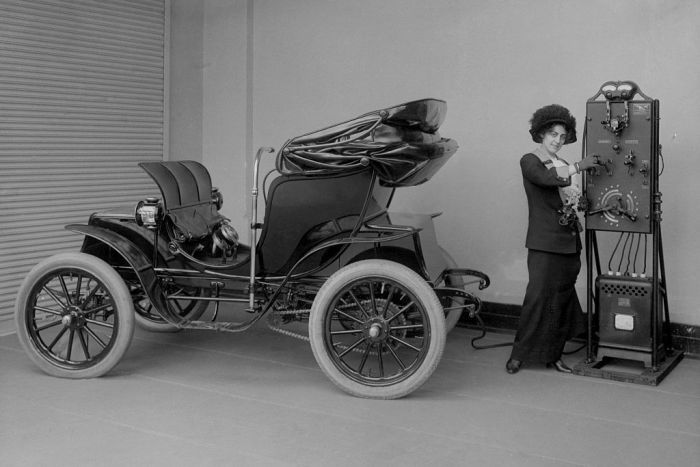Electric vehicles have been around for many years, even though the general public think that electrically powered vehicles are a recent invention. This is because only in recent years these type of vehicles have become more widely known due to being considered as possible alternatives to vehicles powered by combustion engines in an effort to reduce emissions that contribute to Global warming.
An electrically powered small scale model car invented in 1828 in Hungary is considered by many as being the first invented electric vehicle. Others consider an electric powered carriage invented in the 1830’s in Scotland by Robert Anderson as the first electrical powered vehicle. Another small scale electric car was designed by Professor Stratingh and built by Christopher Becker, his assistant, in Holland in 1835. Thomas Davenport also built a small electric car in 1835. He also invented the first DC motor built in the US.
Unfortunately battery technology was not advanced enough to justify further development of these type of vehicles back then. It was not until the late 1890’s that the first true passenger electric vehicle was built by William Morrison in the US. In fact in the years 1899 and 1900 more electric vehicles were sold than other types of vehicles like gasoline and steam powered vehicles in the US.
In the 1900’s electric powered vehicles had many advantages as compared to their competitors. They didn’t have the smell, vibration as well as noise as did the gasoline vehicles. Also, changing gears on gasoline vehicles was the most complicated part of driving, while electrical automobiles did not require gear changes. Steam-powered cars additionally had no gear shifting, but they suffered from long start-up times of up to 45 minutes on cold early mornings.
Steam vehicles had less range before requiring water than an electric vehicle’s range on a single charge. The best roads of the period were in town, restricting most travel to local commuting, which was well suitable for electric vehicles, since their range was limited. The electric car was the preferred alternative of many because it did not require to manually turn the hand crank to start the engine as the gasoline vehicles needed and there was no wrestling with a gear shifter to change gears.
During World War I, the cost of petrol went through the roof contributing to the popularity of electric cars. This lead to the development of the Detroit Electric which started production in 1907. The car’s range between battery recharging was about 130km (80 miles). The range depended on exactly what type of battery came with the vehicle. The typical Detroit Electric was actually powered by a rechargeable lead acid battery, which did exceptionally well in cold weather.
But the popularity of the electric car quickly came to an end. With better roads being built not only within cities, but also connecting them, the need for longer range vehicles grew. This made the electric car an impractical means of transportation. Also the newly discovered oil in the state of Texas in the US which brought the price of gas down considerably, along with the electric starter invention in 1912 which eliminated the need for a hand crank, made the gasoline vehicle the vehicle of choice. And with Henry Ford making them extremely affordable to the general public by mass producing them, the fate of the electric vehicle was sealed for many years.
It wasn’t until the 1990’s that electric vehicles started resurfacing. With the Global warming issue, the exorbitant prices of imported crude oil and legislation for smog reduction in cities, electric vehicles not only resurfaced but this time are here to stay. One of the main reasons contributing to the re-birth of the electric car is the advance in battery technology. The lithium-ion battery packs and the nickel metal hybrid battery packs are much lighter than previous batteries and can hold enough charge to power a vehicle for 100’s of Miles at high speeds between charges making electrical vehicles efficient and practical.



Recent Comments